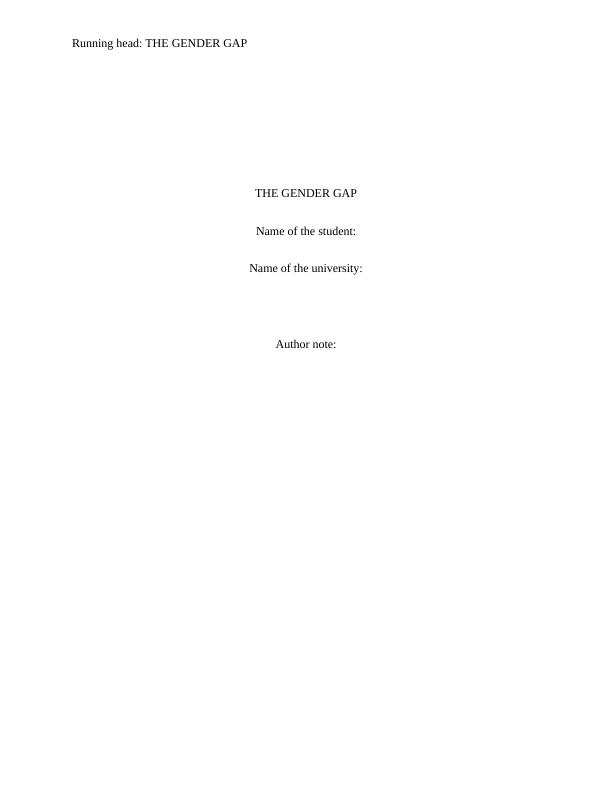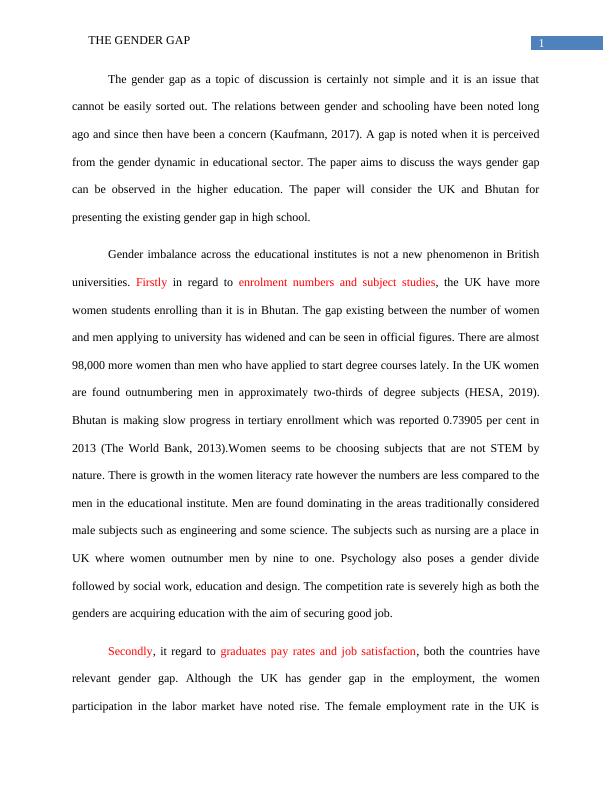The Gender Gap in Higher Education: A Comparative Study of the UK and Bhutan
4 Pages801 Words36 Views
Added on 2022-12-23
About This Document
This paper discusses the existing gender gap in higher education in the UK and Bhutan. It explores the differences in enrollment numbers, subject choices, job satisfaction, and academic leadership positions. The UK has a higher number of women enrolling in universities, while Bhutan is making slow progress. Both countries have a gender pay gap and women face challenges in leadership roles.
The Gender Gap in Higher Education: A Comparative Study of the UK and Bhutan
Added on 2022-12-23
ShareRelated Documents
End of preview
Want to access all the pages? Upload your documents or become a member.
The Shift from Good Intentions to Actual Policy for Educating Girls in Bhutan
|9
|2448
|42
Work the Technology Essay 2022
|5
|2236
|13
Difference Between Male and Female Wage
|12
|2336
|142
Gender Equality in Australia
|8
|1972
|29
(PDF) Equal Pay for Equal Work
|11
|2928
|50
Sweden's Leadership in Gender Equality at Workplaces
|10
|3025
|82


